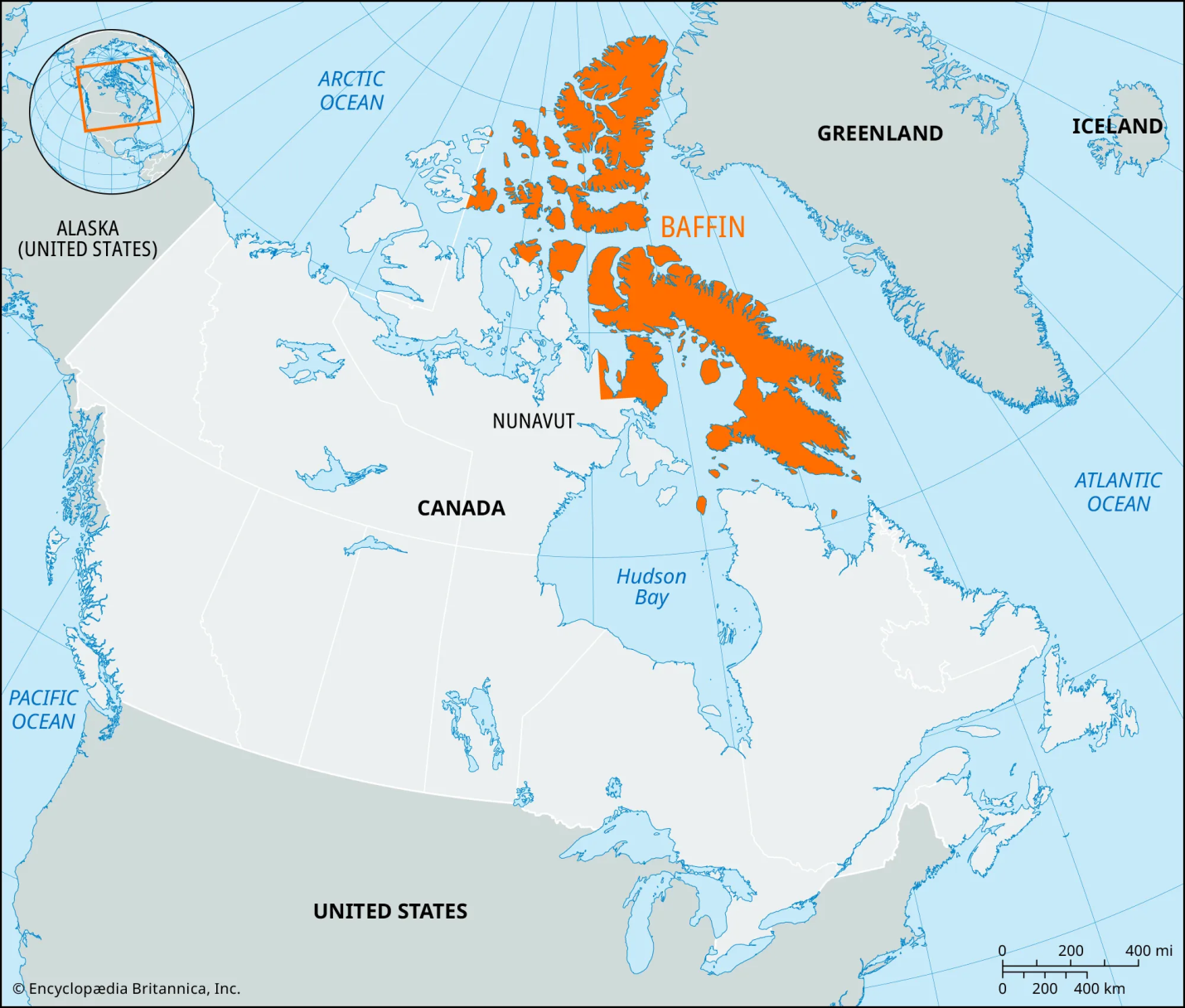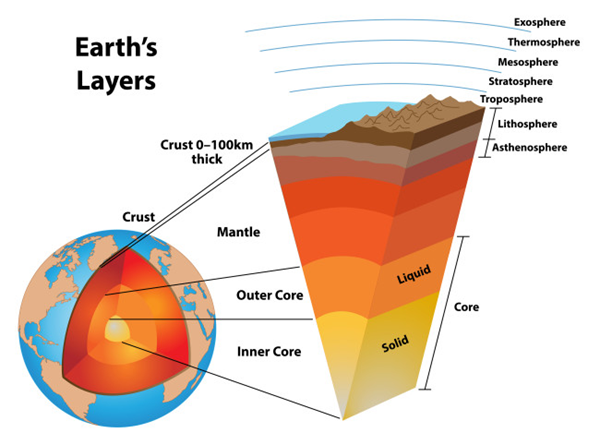EARTH'S CORE LEAKING

Copyright infringement not intended
Picture Courtesy: www.britannica.com
Context: The discovery of unusually high levels of helium-3 (³He) in 62-million-year-old lava rocks on Baffin Island has the potential to reshape our understanding of the Earth's deep interior.
Key points and implications of this discovery:
|
Challenging Prevailing Beliefs |
●The presence of high concentrations of helium-3 challenges the long-held belief that the Earth's core is encapsulated and chemically stable, not transferring materials to the planet's outer layers. This finding suggests that there might be a connection between the Earth's core and its surface. |
|
Helium-3 Origin |
●Helium-3 is a primordial substance created shortly after the Big Bang. It is typically found in small quantities at the Earth's surface and is believed to have been trapped within the Earth during its formation. ●The discovery of significant amounts of helium-3 in volcanic rocks suggests that it may be escaping from the Earth's core, which was not previously considered. |
|
Dynamic Earth Interior |
●If the Earth's core is indeed leaking helium-3, it implies that the deep interior of our planet is more dynamic than previously thought. This challenges the traditional notion of a stable and isolated core and suggests that elements can move between the metallic core and the rocky portions of the Earth. |
|
Further Research |
●The discovery raises many questions about the Earth's internal processes. Scientists will likely conduct further research to determine if other elements also escape from the core and how these elements migrate to the Earth's surface. This research could lead to a better understanding of the Earth's formation and evolution. |
|
Potential Paradigm Shift |
●The findings have the potential to revolutionize our knowledge of the Earth's deep interior and its interaction with the surface. It may lead to a paradigm shift in our understanding of Earth's geology and how materials are exchanged between different layers of the planet. |
Earth's Interior
- The Earth's interior is divided into several layers, each with its unique characteristics. These layers are identified based on differences in composition, temperature, pressure, and physical properties.
- The main layers of the Earth's interior, from the outermost to the innermost, are the crust, mantle, outer core, and inner core.
Crust
- The Earth's crust is the outermost layer and is relatively thin compared to the other layers. It is primarily composed of solid rock and is divided into two main types:
- Continental Crust: This is thicker and less dense than oceanic crust. It consists of a variety of rock types, including granite.
- Oceanic Crust: This is thinner and denser than continental crust and is mainly composed of basalt.
Mantle
- The mantle lies beneath the crust and is much thicker, extending to a depth of about 2,900 kilometres (1,800 miles).
- It is composed of solid rock, but it is partially molten and can flow over very long time scales. This flow in the mantle is responsible for the movement of tectonic plates.
- The mantle's upper part is known as the asthenosphere, which is partially molten and is responsible for the movement of tectonic plates. The lower mantle is mostly solid and experiences high pressures and temperatures.
Outer Core
- The outer core lies beneath the mantle and extends to a depth of about 2,300 kilometres (1,430 miles).
- It is composed of liquid iron and nickel and is responsible for generating the Earth's magnetic field through the geodynamo process. The movement of the molten outer core creates electric currents that produce the magnetic field.
Inner Core
- The inner core is the Earth's innermost layer and extends to a depth of about 1,200 kilometres (745 miles).
- Despite the immense pressure and temperature, the inner core is solid due to the high-pressure conditions. It is primarily composed of iron and nickel.
- The temperature at the inner core's boundary can reach up to 5,700 degrees Celsius (10,300 degrees Fahrenheit), which is hotter than the surface of the sun.

Conclusion
- The discovery is a significant step forward in our understanding of Earth's geological processes and could have far-reaching implications for the field of geology and planetary science. Further research and studies will be crucial in confirming and expanding upon these findings, potentially reshaping our understanding of the Earth's core and its role in the planet's evolution.
|
PRACTICE QUESTION Q. What evidence supports the theory of continental drift, and how has our understanding of plate tectonics enhanced our knowledge of Earth's geological processes? |




1.png)
